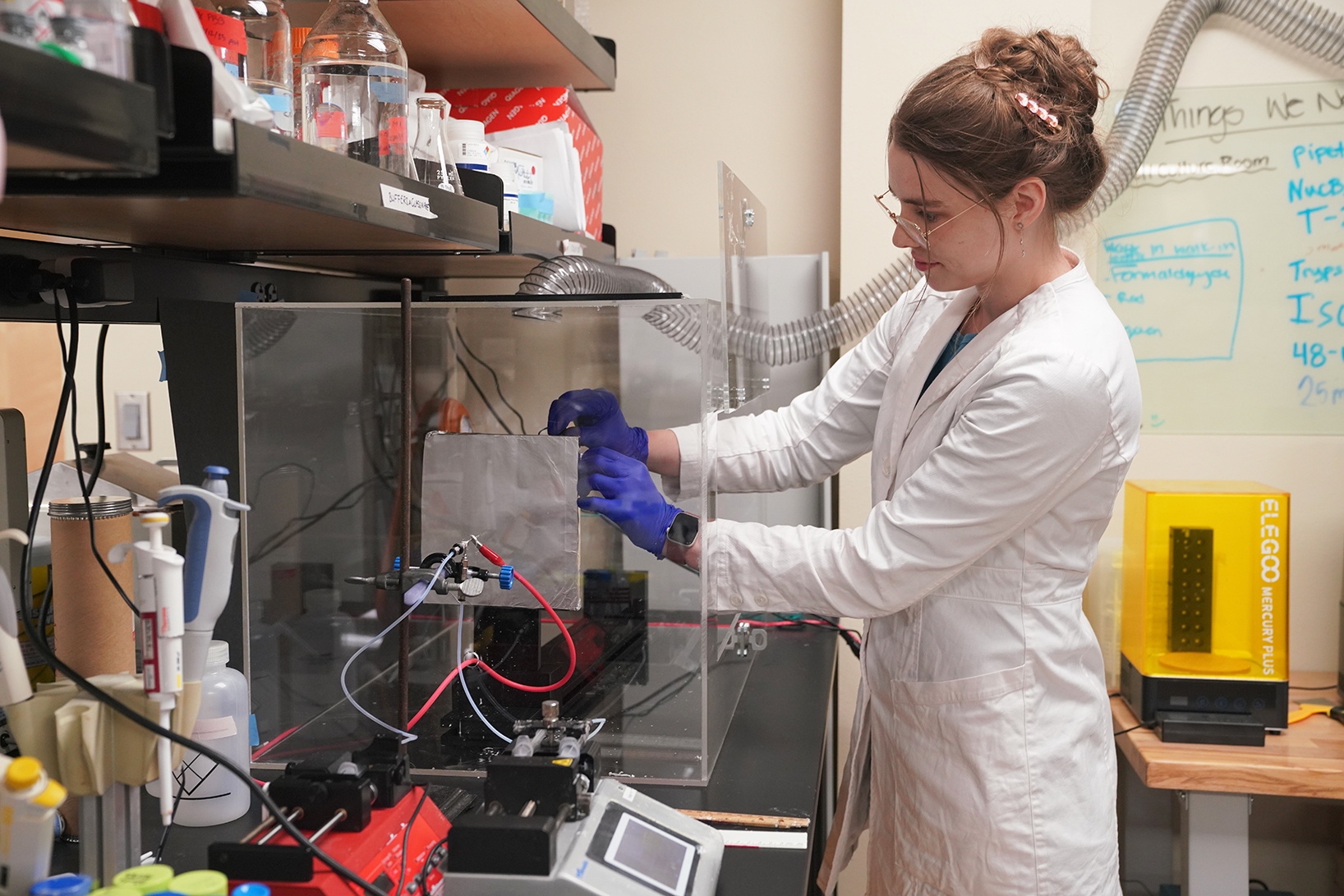Mines Graduate Student Earns Prestigious NSF Fellowship

In 2014, after graduating high school, Whitney Ponwith decided to take some time before going to college.
“I had a few adverse years after high school and needed time before I was ready for college,” she said.
Her decision paid off.
“The time gave me the confidence to make a meaningful difference in the world. When I decided to go back to college, I made it a goal of mine to inspire the younger generations in the world of science. Outreach events sponsored by Mines have given me the platform to make a difference today, and my studies are giving me the platform to make a difference tomorrow,” she said.
Now a graduate student in South Dakota Mines accelerated biomedical engineering program, Ponwith is conducting impactful research and has earned one of the nation’s most prestigious honors for young scientists: a National Science Foundation Graduate Research Fellowship.
This program recognizes outstanding graduate students who have demonstrated the potential to be high-achieving scientists and engineers early in their careers and are pursuing a full-time research-based master's and doctoral degrees in STEM or STEM education. The fellowship provides three years of financial support over a five-year period. The purpose of the GRFP is to help ensure the quality, vitality and strength of the scientific and engineering workforce of the United States.
“I was so excited,” Ponwith said after hearing she had been one of 1,000 recipients. “I feel very honored to have received the fellowship.
GRFP is a competitive program with only a small percentage of the more than 13,000 applications accepted. With federal budget cuts to the NSF, this year’s pool was cut in half.
Ponwith’s research focuses on improving wound healing through electrospun nanofiber scaffolds—a process that uses an electric charge to spin fine fibers from a polymer solution.
“It’s like spinning cotton candy but on a nano level,” she said.
She’s creating a unique coaxial, core-shell fiber using PCL in the core and PLGA in the shell, with the shell functionalized by HA-binding peptides that attract hyaluronic acid to the site.
By comparing how neonatal and adult fibroblasts—skin cells—interact with these fibers, Ponwith aims to better understand age-related differences in healing. Her work has broad potential in regenerative medicine, offering pathways toward scarless healing, reducing painful internal scarring from surgeries or implants, and even contributing to anti-aging therapies.
“I also plan to build on this work by creating a parabiosis-inspired bioengineered culture system that exposes aging or senescent cells to an environment shaped by neonatal fibroblasts,” she said. “The goal is to see whether this process can shift cell behavior toward a more functional, regenerative state.”
She credits Drs. Tugba Ozdemir, Steve Smith, and Brandon Scott from the Department of Nanoscience and Biomedical Engineering for their guidance and mentorship over the years. “The support, mentorship, and opportunities I’ve received at Mines have been truly invaluable,” she said.
Ponwith has been working in Ozdemir’s lab since January 2023. “She has been working very hard on her project and so far is making great progress,” Ozdemir said. “I am delighted to see her successes.”
Ponwith has five years to use her funding, so she plans to finish her master’s this spring and use the three years toward expanding her research and earning her doctorate – what she’ll do after that, she is still contemplating.
“I can see myself staying in academia. I love mentoring, and I do a lot of outreach at Mines,” she said. “But also, it would be really cool to go into research or work in industry, bringing what you do in the lab into reality.”
Whatever path she chooses, Ponwith is ready to make a difference by turning her ground-breaking research into a real-world impact.